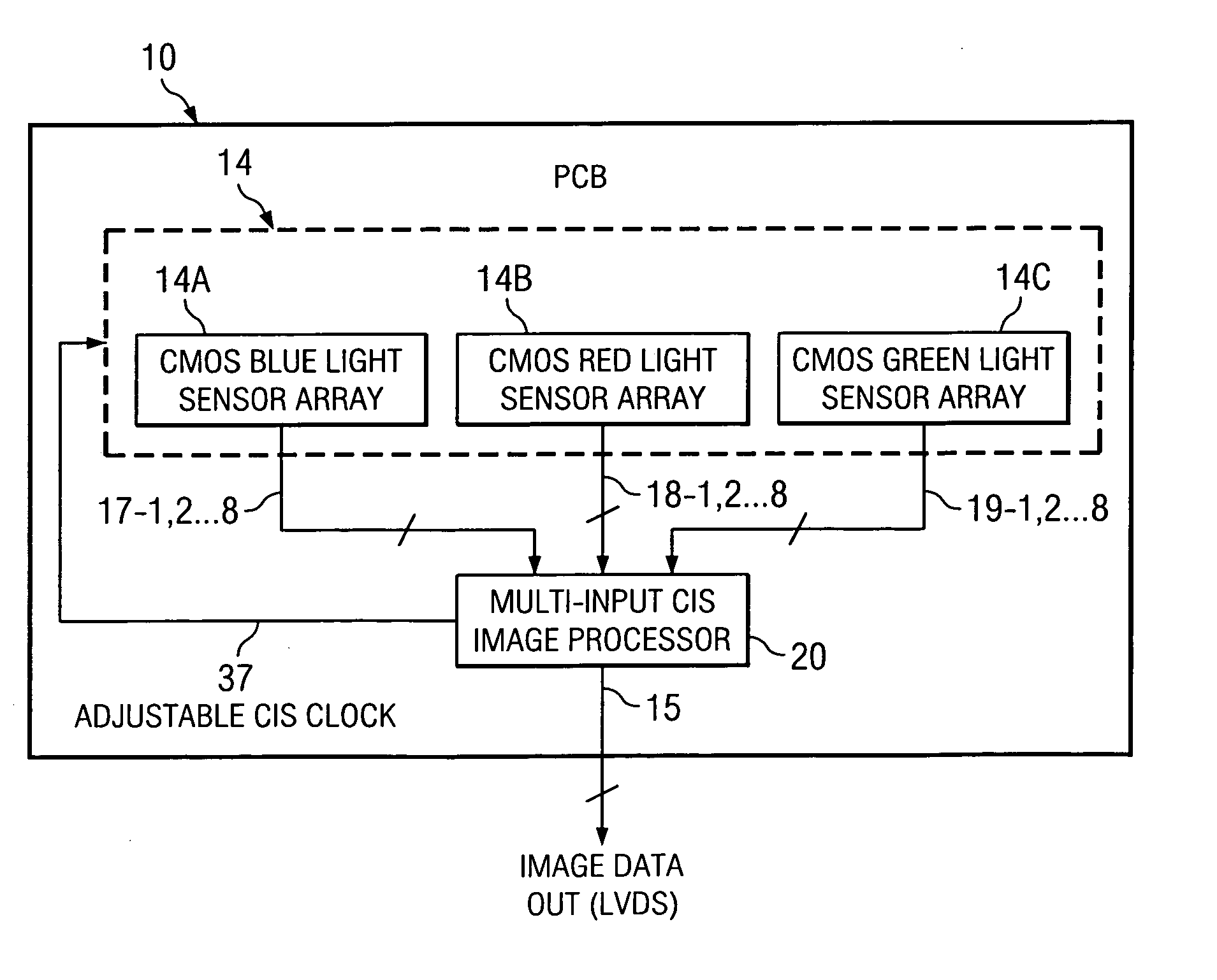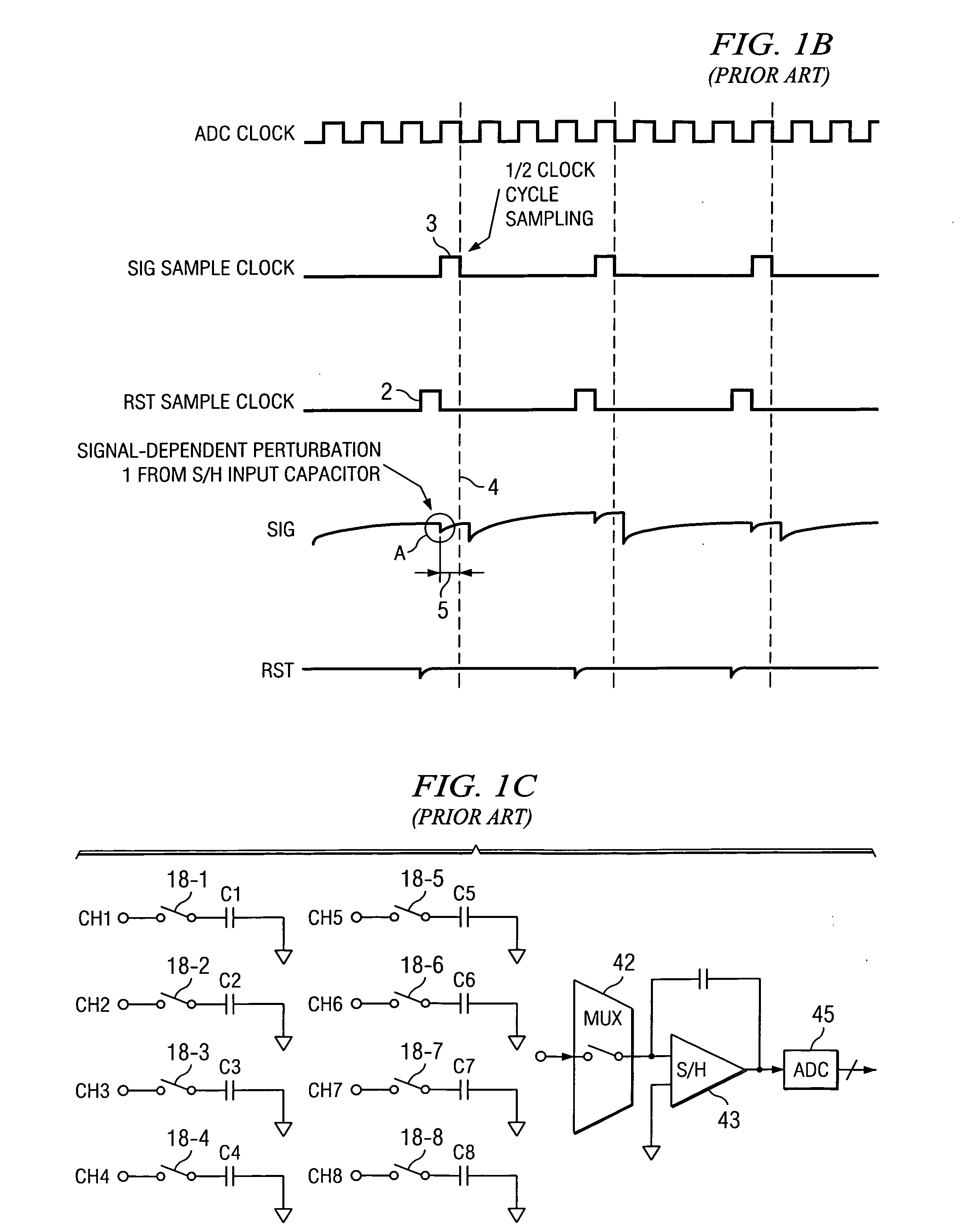Multiple-bank CMOS image sensor system and method
a sensor system and image sensor technology, applied in the field of multi-bank cmos image sensor system and method, can solve the problems of power-consuming external buffers/amplifiers that need to be connected, inaccuracy of analog to digital conversion, and inability to settle sample/hold circuits in the prior art, so as to increase imaging speed and reduce power consumption.
- Summary
- Abstract
- Description
- Claims
- Application Information
AI Technical Summary
Benefits of technology
Problems solved by technology
Method used
Image
Examples
Embodiment Construction
[0038]In the described embodiments of the invention, the analog output signals produced by the multiple banks of CMOS sensors are all sampled and then converted to digital equivalents within a relatively short single synchronization time frame. In order to achieve both reduced cost for the required ADCs and suitably high image processing speed, the CMOS sensors of a particular kind, e.g. blue light CMOS sensors, are arranged in banks which are alternately strobed or enabled so that the analog output signals of one bank are rapidly and sequentially coupled to the input of a single ADC while the CMOS sensors of another bank are accumulating photons and generating corresponding charge and output voltages representative of the intensity of the sensed light.
[0039]FIG. 2 shows a waveform of a clock signal CIS CLOCK which can be used to enable or strobe either a conventional CMOS sensor which produces an analog output signal representative of the ambient light intensity in response to fall...
PUM
 Login to View More
Login to View More Abstract
Description
Claims
Application Information
 Login to View More
Login to View More - R&D
- Intellectual Property
- Life Sciences
- Materials
- Tech Scout
- Unparalleled Data Quality
- Higher Quality Content
- 60% Fewer Hallucinations
Browse by: Latest US Patents, China's latest patents, Technical Efficacy Thesaurus, Application Domain, Technology Topic, Popular Technical Reports.
© 2025 PatSnap. All rights reserved.Legal|Privacy policy|Modern Slavery Act Transparency Statement|Sitemap|About US| Contact US: help@patsnap.com



